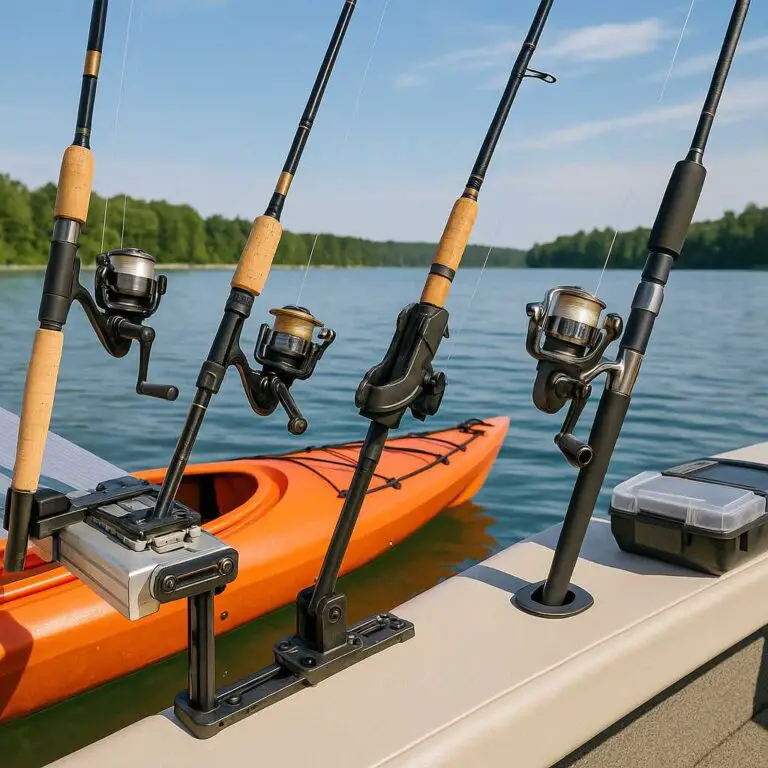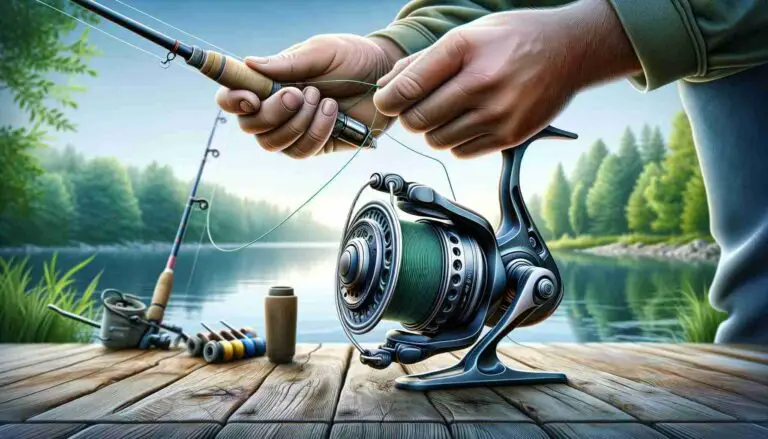Bass fishing is a popular sport among fishing enthusiasts, but one variable that can greatly impact success on the water is the wind. Wind can have both positive and negative effects on bass behavior and fishing conditions, which is why it’s essential to understand how it can affect your fishing trip. In this article, I’ll explore the effects of wind on bass fishing, fishing techniques for windy conditions, weather, and wind forecasting, and provide tips for maximizing your chances of a successful catch.
How Wind Affects Bass Fishing
Wind can have a significant impact on bass behavior. In general, bass are more active and feed more aggressively when there is wind present. This is because the wind causes an increase in wave action, which creates a natural cover for the bass to hide in and ambush prey. Additionally, wind creates current, which can move baitfish around and bring them closer to the bass.
Wind can also impact the water temperature and oxygen levels in a body of water. When there is wind present, it can cause the surface water to cool, which can trigger a reaction from the bass. Additionally, wind can increase the amount of oxygen in the water, which can lead to increased feeding activity from the bass.
Wind can impact the movement and distribution of baitfish, which in turn can impact the behavior of the bass. When there is wind present, baitfish will move to areas where they can find shelter from the waves. This can cause the bass to follow the baitfish and concentrate in certain areas of the water.
Understanding wind direction and speed is crucial for successful bass fishing. Wind direction can impact the movement of baitfish and the position of the bass in the water. For example, if the wind is blowing towards the shore, the bass may be positioned closer to the shore in search of food. Wind speed can also impact fishing conditions. If the wind is too strong, it can make it difficult to cast and control the boat, which can negatively impact fishing success.
Wind can be both beneficial and challenging
Yes, wind can be both beneficial and challenging for bass fishing. On one hand, wind can create ideal conditions for bass feeding by creating wave action and increasing oxygen levels in the water. Wind can also help to concentrate baitfish and bass in certain areas, making it easier to locate and catch fish.
On the other hand, wind can also make it more challenging to control the boat and cast accurately. Strong winds can create choppy water conditions, making it more difficult to maintain boat position and control lure movement. Additionally, casting accuracy can be compromised in strong wind conditions, making it more challenging to place lures in the strike zone. In extreme cases, strong winds can make it unsafe to be on the water, creating a hazard for anglers.
Understanding wind patterns in different seasons
Understanding wind patterns in different seasons is an important aspect of successful bass fishing. Wind patterns can vary depending on the time of year and can have a significant impact on fishing conditions. Here are some tips for understanding wind patterns in different seasons:
- Spring: In the spring, wind patterns tend to be more variable and unpredictable. This is because weather patterns can change rapidly, and cold fronts can move in and out quickly. As a result, it’s important to check weather forecasts regularly and adjust fishing strategies accordingly. In general, wind can be beneficial for bass fishing in the spring, as it can create ideal feeding conditions.
- Summer: In the summer, wind patterns tend to be more consistent. This is because high-pressure systems are more common, which can create stable weather conditions. In general, wind can be beneficial for bass fishing in the summer, as it can help to cool the surface water and increase oxygen levels. However, strong winds can also make it challenging to control the boat and cast accurately.
- Fall: In the fall, wind patterns tend to be more stable and predictable. This is because weather patterns tend to be more consistent, and cold fronts can move in and out gradually. In general, wind can be beneficial for bass fishing in the fall, as it can create ideal feeding conditions. Additionally, wind can help to concentrate fish in certain areas, making it easier to locate and catch fish.
- Winter: In the winter, wind patterns tend to be more consistent and predictable. This is because weather patterns are typically more stable, and cold fronts can move in and out gradually. In general, wind can be challenging for bass fishing in the winter, as it can create choppy water conditions and make it more difficult to locate and catch fish. However, certain wind patterns can be beneficial, such as a warm south wind, which can help to increase water temperature and stimulate feeding activity.
Fishing Techniques for Windy Conditions
Fishing techniques should be adjusted based on the wind conditions. In general, the windier it is, the more aggressive the fishing approach should be. This means using heavier lures and fishing faster. There are 3 main techniques for fishing in the wind, this includes casting into the wind, using heavier lures, and fishing structure.
- Casting into the wind: When there is wind present, it can be challenging to make accurate casts. One technique for casting in the wind is to cast into the wind. This can help to increase casting distance and accuracy.
- Using heavier lures: In windy conditions, using heavier lures can help to maintain control and increase the chances of a successful catch. This is because the weight of the lure can help to keep it in the strike zone despite the wind.
- Fishing structure: When there is wind present, bass will often seek shelter in areas with structure, such as rocks, logs, and weed beds. Fishing in these areas can increase the chances of a successful catch.
Boat position and drift are also crucial in windy conditions. It’s essential to position the boat so that the wind is blowing towards you, as this will allow for more accurate casting and greater control over the lure. Additionally, being aware of the boat’s drift can help to keep the lure in the strike zone and increase the chances of a successful catch.
Adjust lure presentation in response to wind
Adjusting lure presentation in response to the wind is an important technique for successful bass fishing. When fishing in windy conditions, it’s important to use lures that can maintain their depth and stay in the strike zone despite the choppy water. Here are some techniques for adjusting lure presentation in response to the wind:
- Slow down the retrieve: When fishing with lures such as crankbaits or jerkbaits, it can be helpful to slow down the retrieve in windy conditions. This will help to maintain control of the lure and prevent it from getting blown off course. Slowing down the retrieve can also make the lure more visible and easier for bass to track.
- Use a heavier jig head: When fishing with soft plastics such as worms or swimbaits, using a heavier jig head can help to maintain depth in windy conditions. This will help the lure stay in the strike zone and prevent it from getting pushed around by the wind. Additionally, heavier jig heads can be easier to cast in windy conditions, allowing for more accurate presentations.
- Switch to a finesse presentation: In some cases, switching to a finesse presentation such as drop shotting or using a wacky rig can be effective in windy conditions. Finesse presentations typically involve smaller lures and lighter lines, which can be easier to control in choppy water. Additionally, finesse presentations can be effective for targeting fish that are less active in windy conditions.
Weather and Wind Forecasting
Checking weather forecasts for wind information is essential for successful bass fishing. Wind conditions can vary greatly from day to day and can impact fishing success. Therefore, it’s essential to have a good understanding of the expected wind conditions before heading out on the water.
There are several tools and resources available for monitoring wind speed and direction. One option is to use a smartphone app that provides real-time weather information. Another option is to use a handheld anemometer, which measures wind speed and direction. Additionally, many fishing websites and forums provide information on wind conditions in specific bodies of water.
Understanding how different wind patterns affect bass fishing is crucial for success on the water. For example, a north wind can cause a decrease in water temperature, which can lead to reduced feeding activity from the bass. On the other hand, a south wind can increase water temperature and lead to increased feeding activity. It’s important to understand how different wind patterns impact fishing conditions and adjust fishing strategies accordingly.
Conclusion
In conclusion, wind can have a significant impact on bass fishing conditions. Understanding how wind affects bass behavior, water temperature, oxygen levels, and baitfish movement and distribution is crucial for successful fishing.
Adjusting fishing techniques in response to windy conditions, including casting into the wind, using heavier lures, and fishing structures, can increase the chances of a successful catch. Checking weather forecasts and understanding how different wind patterns impact fishing conditions is also essential. With these tips and techniques, anglers can maximize their chances of a successful and enjoyable bass fishing trip.








